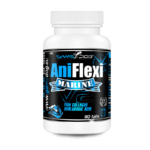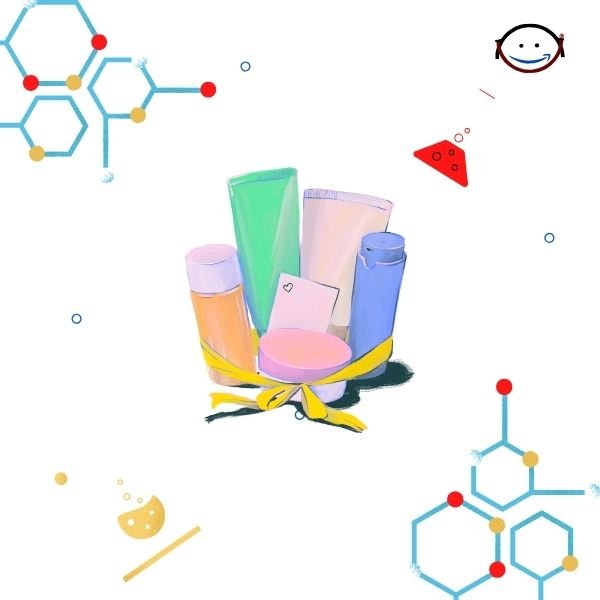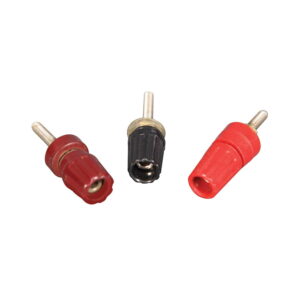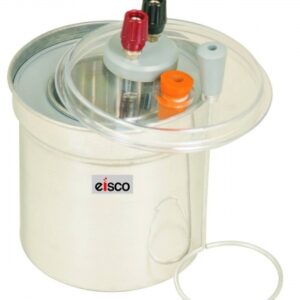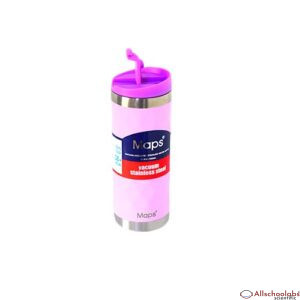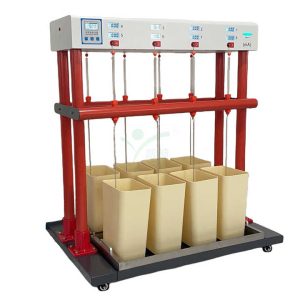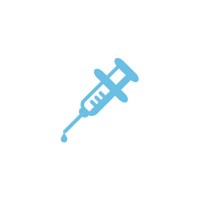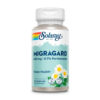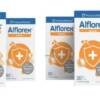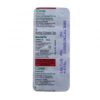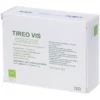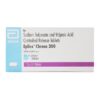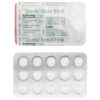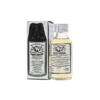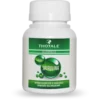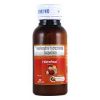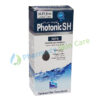-
Curaprox Be you Toothpaste Peach+Apricot 60ml ₦31,232.00 QTY: 3
-
Phillip Power Touch Electric Shaver Valentine?s Day Gift Basket For Him ₦55,000.00 QTY: 1
-
Alflorex Immune Tablets 6 Month Supply - 6 x 30 Pack ₦131,400.00 QTY: 1
-
Zapiz 0.5 Tablet -20Tab ₦680.00 QTY: 1
-
ALENIX M TAB 10`S ₦2,578.25 QTY: 1
-
CALOKARD PLUS TAB 10`S ₦3,692.00 QTY: 2
-
Rennie Spearmint Indigestion Tablets - 48 Pack ₦225,600.00 QTY: 1
-
Tireovis 60 Tablets ₦42,997.00 QTY: 2
-
EPILEX CHRONO 300MG TAB 15`S ₦2,416.50 QTY: 1
-
CARLOC 3.125MG TAB 15`S ₦1,130.75 QTY: 1
-
Gripe water remedy for colic and stomach upsets in babies ₦600.00 QTY: 1
-
SPIRULINA Thotale? 60 Tablets ₦11,286.00 QTY: 1
-
NATURE?S FIELD EVE?S DESIRE (30 TABLETS) ₦12,000.00 QTY: 1
-
HISTAFREE RASPBERRY VANILLA FLAVOUR BOTTLE OF 60ML SUSPENSION ₦1,348.20 QTY: 1
-
Photonic SH Men Shampoo 120ml ₦1,068.00 QTY: 1
Customer matched zone "Lagos Delivery Options"
Sort by:
169857–169872 of 366084 Results
-
SaleInsulatard 100 IU/mlTreatment of all patients with type 1 diabetes. Treatment of patients with type 2 diabetes who are not adequately controlled by diet and/ or oral hypoglycemic agents. For the initial stabilization of diabetes in patients with diabetic ketoacidosis, hyperosmolar non-ketotic syndrome and during periods of stress such as severe infections and major surgery in diabetic patients. Treatment of gestational diabetes.Theropeutic ClassLong Acting InsulinPharmacologyThe blood glucose lowering effect of insulin is due to the facilitated uptake of glucose following binding of insulin to receptors on muscle and fat cells and to the simultaneous inhibition of glucose output from the liver. Insulatard is a long-acting insulin. Onset of action is within 1? hours, reaches a maximum effect within 4-12 hours and the entire time of duration is approximately 24 hours.Insulin in the blood stream has a half-life of a few minutes. Consequently, the time-action profile of an insulin preparation is determined solely by its absorption characteristics. This process is influenced by several factors (e.g. insulin dosage, injection route and site, thickness of subcutaneous fat, type of diabetes). The pharmacokinetics of insulins is therefore affected by significant intra- and inter-individual variationDosage of Insulatard 100 IU/mlDosage is individual and determined in accordance with the needs of the patient. The individual insulin requirement is usually between 0.3 and 1.0 IU/kg day. The daily insulin requirement may be higher in patients with insulin resistance (e.g. during puberty or due to obesity) and lower in patients with residual, endogenous insulin production.The physician determines one or several daily injections are necessary. Insulatard may be used alone or mixed with fast-acting insulin. In intensive insulin therapy the suspension may be used as basal insulin (evening and/or morning injection) with fast-acting insulin given at meals. In patients with diabetes mellitus optimised glycaemic control delays the onset of late diabetic complications. Close blood glucose monitoring is recommended.Administration of Insulatard 100 IU/mlFor subcutaneous use. Insulatard is usually administered subcutaneously in the thigh. If convenient, the abdominal wall, the gluteal region or the deltoid region may also be used. Subcutaneous injection into the thigh results in a slower and less variable absorption compared to the other injection sites. Injection into a lifted skin fold minimises the risk of unintended intramuscular injection.Keep the needle under the skin for at least 6 seconds to make sure the entire dose is injected. Injection sites should be rotated within an anatomic region in order to avoid lipodystrophy. Insulin suspensions are never to be administered intravenously. Insulatard is accompanied by a package leaflet with detailed instruction for use to be followed. The vials are for use with insulin syringes with corresponding unit scale. When two types of insulin are mixed, draw the amount of fast-acting insulin first, followed by the amount of long-acting insulinInteraction of Insulatard 100 IU/mlA number of medicinal products are known to interact with the glucose metabolism. Physicians must therefore take possible interactions into account and should always ask their patients about any medicinal products they take.The following substances may reduce insulin requirement: Oral hypoglycaemic agents (OHA), monoamine oxidase inhibitors (MAOI), non-selective beta-blocking agents, angiotensin converting enzyme (ACE) inhibitors, salicylates and alcohol.The following substances may increase insulin requirement: Thiazides, glucocorticoids, thyroid hormones and beta-sympathomimetics, growth hormone and danazol. Beta-blocking agents may mask the symptoms of hypoglycaemia and delay recovery from hypoglycaemia. Octreotide/lanreotide may both decrease and increase insulin requirement. Alcohol may intensify and prolong the hypoglycaemic effect of insulin.ContraindicationsHypoglycaemia, Hypersensitivity to human insulin or to any of the excipientsSide Effects of Insulatard 100 IU/mlHypoglycemia is the most common adverse effect during insulin treatment and symptoms of hypoglycemia may occur suddenly. Few cases of the allergic reaction such as red and swollen or itching are reported. It usually disappears in a few days. In some instances, the allergy may be caused by other reasons rather than insulin, such as disinfectant and poor injection technique.Pregnancy & LactationThere are no restrictions on treatment of diabetes with insulin during pregnancy, as insulin does not pass the placental barrier.Precautions & WarningsInadequate dosage or discontinuation of treatment, especially in type 1 diabetes, may lead to hyperglycaemia. Usually the first symptoms of hyperglycaemia set in gradually, over a period of hours or days. They include thirst, increased frequency of urination, nausea, vomiting, drowsiness, flushed dry skin, dry mouth, loss of appetite as well as acetone odour of breath In type 1 diabetes, untreated hyperglycaemic events eventually lead to diabetic ketoacidosis, which is potentially lethal. Hypoglycaemia may occur if the insulin dose is too high in relation to the insulin requirementOmission of a meal or unplanned, strenuous physical exercise may lead to hypoglycaemia. Patients whose blood glucose control is greatly improved e.g. by intensified insulin therapy, may experience a change in their usual warning symptoms of hypoglycaemia and should be advised accordingly Usual warning symptoms may disappear in patients with longstanding diabetes.Overdose Effects of Insulatard 100 IU/mlA specific overdose of insulin cannot be defined. However, hypoglycaemia may develop over sequential stagesStorage ConditionsStore in a refrigerator (2?C-8?C). Do not freeze. Keep the container cartridge or vial in the outer carton in order to protect from light.During use: do not refrigerate. Do not store vials above 25?C and cartridges above 30?C. Protect from excessive heat and sunlight.Sku: 1736098911-1936
Insulatard100 IU/ml
₦25,300.00Original price was: ₦25,300.00.₦24,035.00Current price is: ₦24,035.00.₦25,300.00Original price was: ₦25,300.00.₦24,035.00Current price is: ₦24,035.00. Add to basket Quick View -
-
-
Insulated Jacket The Knox range of affordable weather protectionSku: 1693777246-15
Insulated Jacket
₦15,000.00 -
These slider hasps are ideally suited for use on electrical applications, as the material the device is made from is completely non conductive. It is recommended they are used on devices such as electrical panels, miniature circuit breakers and other electrical applications. Available in 1.5mm, 3mm, 6mm and 8mm shackle size. order now from us sales@safetynigeria.com 09093333374Sku: 1699151086-55
Insulated Lockout Slider Hasp – 4 Holes
₦1,000.00 -
-
-
Stainless steel interior Double-walled vacuum insulation Airtight twist-on lid BPA free 500mlSku: 20054
Insulated Vaccum Flask
-
Stainless steel interior Double-walled vacuum insulation Airtight twist-on lid BPA free 500mlSku: 20053 a
Insulated Vaucum Flask
-
Insulating Boots Withstand Voltage Test Equipment (Auto)Sku: 1688422789-212
Insulating Boots Withstand Voltage Test Equipment (Auto)
₦1,801,786.34 -
-
-
-
-
SaleInsulet 30%+70% in 100 IU/mlTreatment of all type 1 diabetic patient. Treatment for those with type 2 diabetes whose blood sugar cannot be sufficiently controlled by diet or oral hypoglycemic medications. For the initial stabilization of diabetes in people with diabetic ketoacidosis, hyperosmolar non-ketotic syndrome, and during stressful times like serious illnesses and major surgery for people with diabetes. Gestational diabetes treatment.CompositionIsophane Insulin Human 30/70 Injection with Insulin Human (rDNA) Insulin Human (rDNA) USP 40 IU (equal to 1.388 mg) is present in each milliliter of solution as 30% Soluble Insulin Human (Regular) and 70% Isophane Insulin Human. Isophane Insulin Human 30/70 Injection with Insulin Human (rDNA) Insulin Human (rDNA) USP 100 IU (equal to 3.47 mg) is present in each milliliter of solution as 30% Soluble Insulin Human (Regular) and 70% Isophane Insulin Human. 50/50 Injection of Insulin Human (rDNA) and Isophane Insulin Human (rDNA) USP 100 IU (equal to 3.47 mg) is present in each milliliter of solution as 50% soluble Insulin Human (Regular) and 50% isophane Insulin Human.Theropeutic ClassInsulin with a Medium Action.PharmacologyHuman insulin is produced using recombinant DNA technology as Insulin Human (rDNA). It works and is structurally identical to natural insulin. Insulin controls how glucose is metabolized and promotes the absorption and use of glucose by the liver, muscles, and fat. By promoting glycogenesis and preventing gluconeogenesis, it also reduces blood sugar levels. After injection, insulin human (rDNA) 30/70 and insulin human (rDNA) 50/50 begin to work within 30 minutes, reach their peak levels between 2 and 8 hours later, and persist for roughly 24 hours.Dosage of Insulet 30%+70% in 100 IU/mlThe average range of total daily insulin requirement for maintenance therapy in type 1 diabetic patients lies between 0.5 and 1.0 IU/kg. In pre-pubertal children it usually varies from 0.7 to 1.0 IU/kg, whereas in insulin resistant cases, e.g. during puberty or due to obesity, the daily insulin requirement may be substantially higher. Initial dosages for type 2 diabetic patients are often lower, e.g. 0.3 to 0.6 IU/kg/day.The dosage form, the dosage and the administration time of the insulin are different due to the individual differences of each patient. In addition, the dosage is also affected by food, working style and exercising intensity. Therefore, patients should use the insulin under doctor's instruction.Administration of Insulet 30%+70% in 100 IU/mlWithin 30 minutes of an injection, a meal or snack containing carbs should be had. Subcutaneous injections are given in the upper arm, thigh, buttock, or abdominal wall. More quickly than from other injection locations, the abdominal wall receives a subcutaneous injection. Never inject insulin human (rDNA) 30/70 or insulin human (rDNA) 50/50 intravenously. Getting ready for use: Sanitize your hands. To evenly mix the solution and see if the insulin looks normal, gently shake or rotate the vial. When using a brand-new vial, remove the plastic protective cap and use an alcohol swab to clean the rubber plug. Add air to your syringe in an amount equal to the required amount of insulin. Inject air by sticking the needle into the vial. Draw the appropriate amount of insulin into the syringe while turning the bottle and syringe upside down. Check to see if there are any bubbles left in the syringe before removing the needle. In that case, hold the syringe upright and tap it to release the air bubbles. Injection site: Choose the region of the body with looser-fitting skin, such as the upper arm, thigh, buttock, or abdomen. Choose a location for each injection that is at least 1 cm away from the location of the preceding injection to prevent tissue injury. Injection method: Wash the area of the skin where the injection will be made with alcohol. Place the needle so that it forms a 45? angle with the skin. Injecting insulin requires puncturing the skin with a needle. To ensure that the entire dosage is injected, keep the needle subcutaneous for at least 6 seconds. After removing the needle, place mild pressure on the injection site for several seconds. Avoid scratching the injection site.Interaction of Insulet 30%+70% in 100 IU/mlWhen taking oral contraceptives, thyroid hormone, adrenal cortical hormone, and other medications that can cause blood sugar levels to rise, you may need to take more insulin. Reduced insulin dosage is necessary when using antidepressants such as salicylate, sulfanilamide, and others that have hypoglycemic effects and cause a drop in blood sugar levels.ContraindicationsPatients with hypoglycemia or those who are allergic to insulin or any of the excipients.Side Effects of Insulet 30%+70% in 100 IU/mlThe most frequent unfavorable consequence of insulin therapy is hypoglycemia, and its symptoms might strike rapidly. There aren't many occurrences of allergic reactions that cause red, puffy, or itchy skin. It typically goes away after a few days. In rare cases, factors other than insulin, such as disinfectant and improper injection technique, may be to blame for the allergy.Pregnancy & LactationBecause insulin cannot cross the placental barrier, there are no limits on using it to treat diabetes during pregnancy. Baby safety is unaffected by the mother's insulin medication.Precautions & WarningsHyperglycemia may result from improper dosing or stopping the medication, particularly in type 1 diabetes. If the insulin dose is excessively high compared to the amount of insulin needed, hypoglycemia could result. Hypoglycemia can result from skipping meals or unexpectedly doing hard physical activity.Overdose Effects of Insulet 30%+70% in 100 IU/mlHypoglycemia during treatment may result from using too much insulin. Hypoglycemia between mild and moderate may strike suddenly. When hypoglycemia strikes, it is crucial to seek immediate medical attention. If you have hypoglycemia frequently, speak with your doctor about any potential adjustments to your therapy, diet, and/or exercise regimen that may be necessary to help you stay hypoglycemic-free.Storage ConditionsKeeping in a refrigerator, store between 2 and 8 degrees Celsius. Never freeze. If insulin is being used recently and does not need to be refrigerated, try to keep it in a cool area away from heat and light. The currently-in-use insulin can be stored at room temperature for a month.Sku: 1736100451-2389
Insulet30%+70% in 100 IU/ml
₦22,825.00Original price was: ₦22,825.00.₦21,683.75Current price is: ₦21,683.75.₦22,825.00Original price was: ₦22,825.00.₦21,683.75Current price is: ₦21,683.75. Add to basket Quick View -
Insulin ACTRAPID is used to reduce high blood sugar levels in patients with diabetes. It is administered 30 minutes before one has a meal as its fast acting and can be used with long lasting insulins.Can be given intravenously but only by doctors or nurse.Sku: 1713648805-487
Insulin 100IU/ML ACTRAPID injection vial
₦100.00
